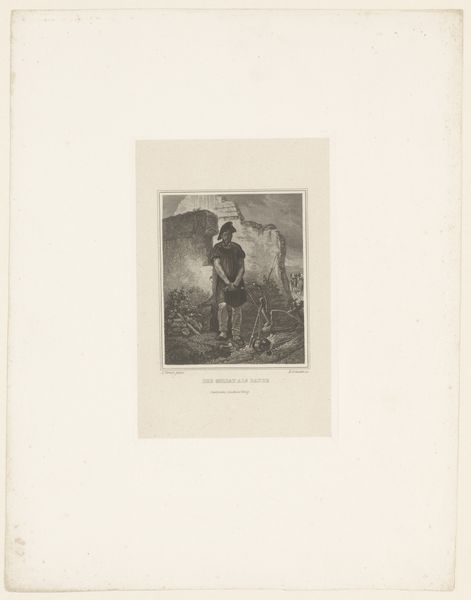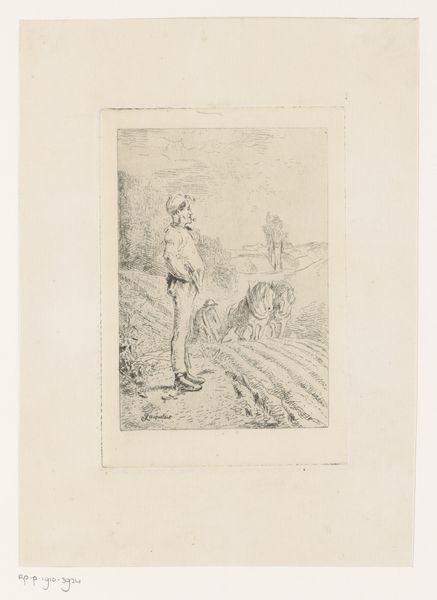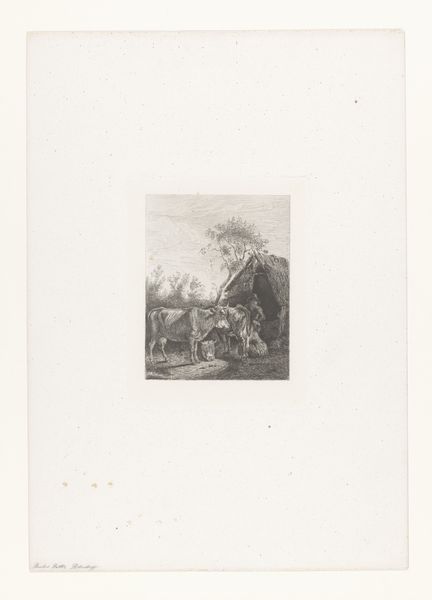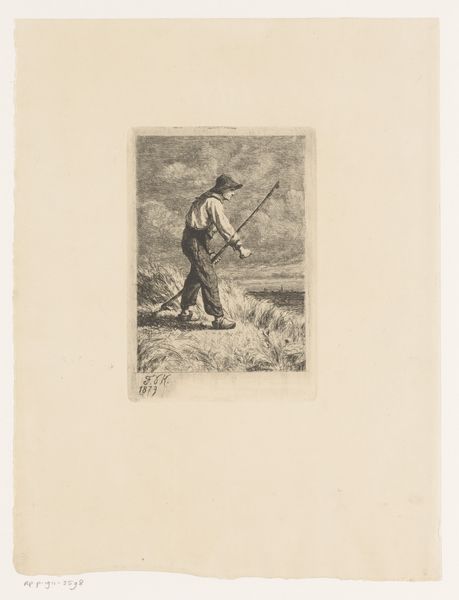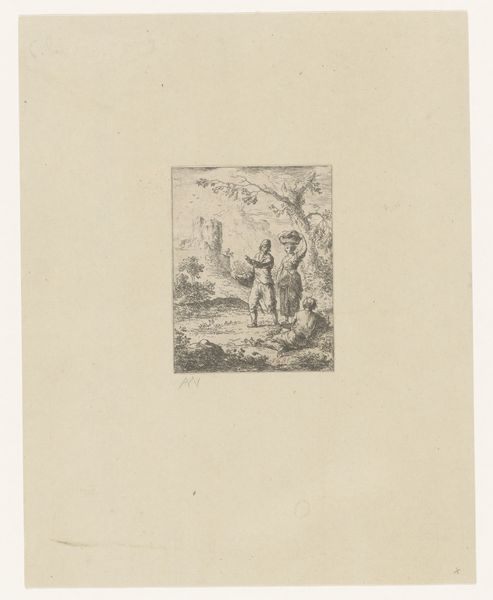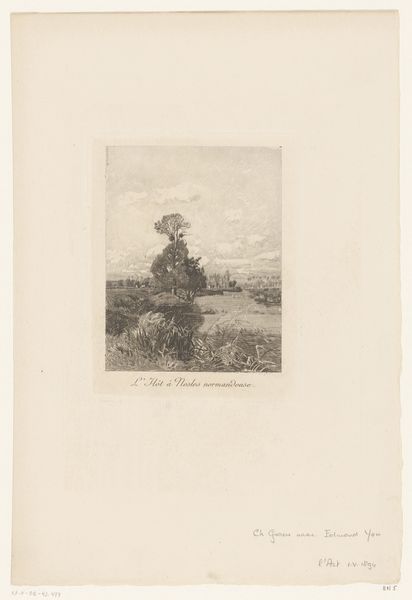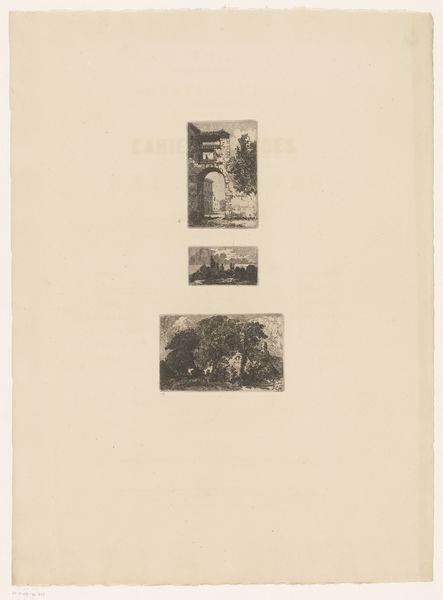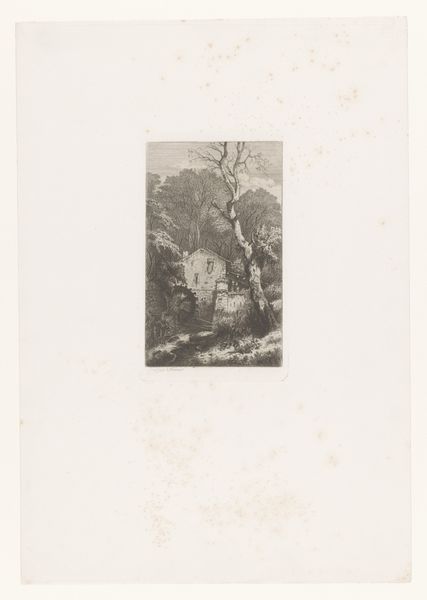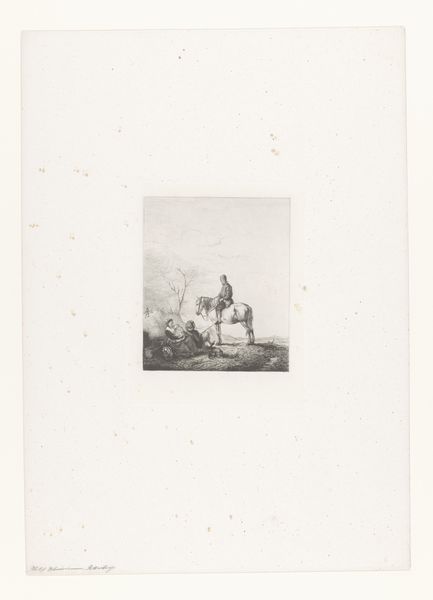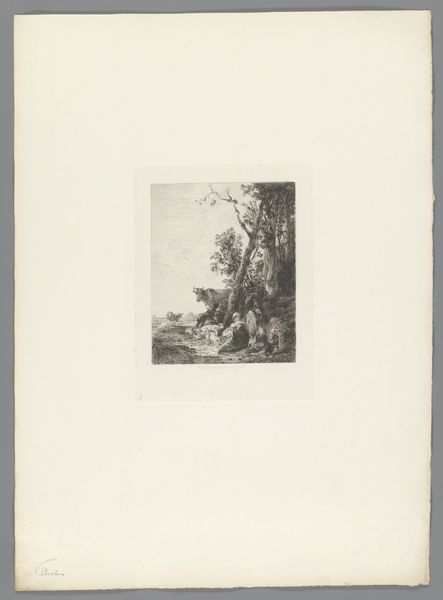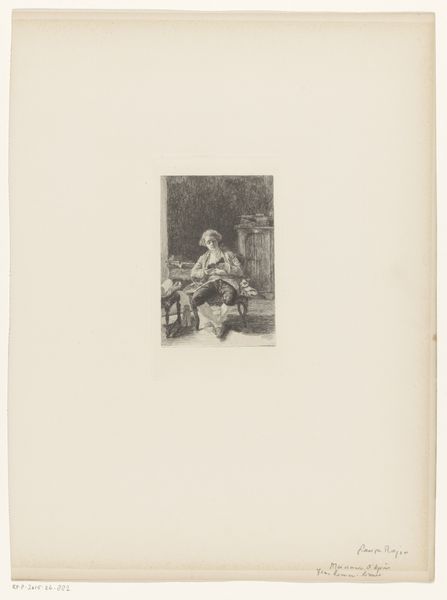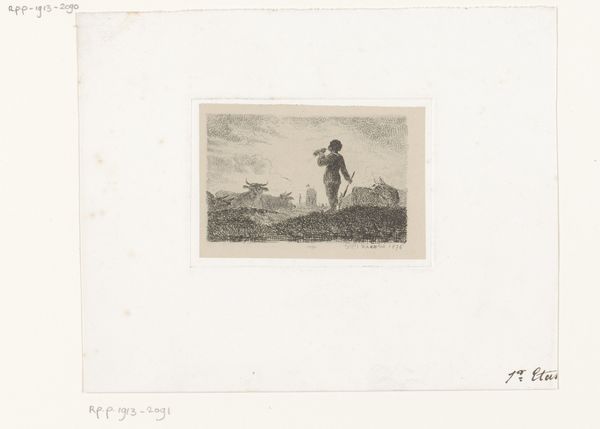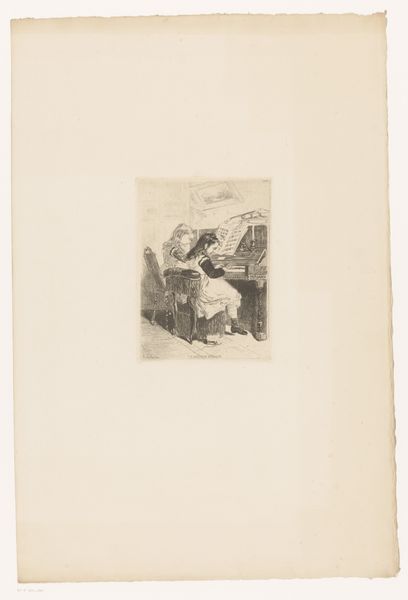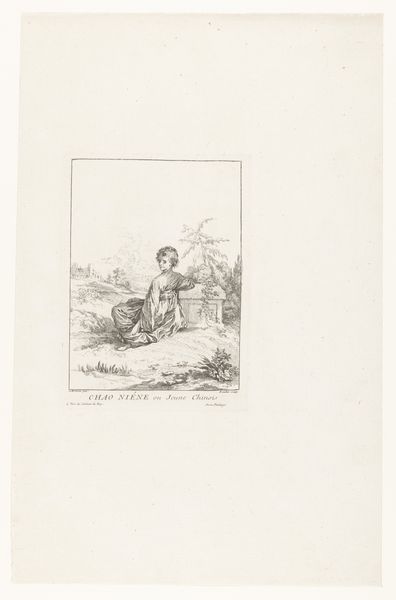
Man met pijp kijkt toe hoe een akker geploegd wordt met een ploeg getrokken door twee paarden 1830 - 1910
0:00
0:00
drawing, print, etching
#
drawing
#
ink paper printed
# print
#
etching
#
landscape
#
genre-painting
#
realism
Dimensions: height 179 mm, width 123 mm
Copyright: Rijks Museum: Open Domain
Curator: Oh, what a tiny window into another time! I see quiet contemplation rendered in delicate lines. It feels wistful somehow. Editor: Indeed. This etching, ink on paper, from the late 19th century depicts a man watching a field being plowed. It's titled "Man met pijp kijkt toe hoe een akker geploegd wordt met een ploeg getrokken door twee paarden"—quite a mouthful, isn't it? Curator: That title just rolls off the tongue! And "seen while puffing on a pipe"... You know, there's something deeply satisfying about the scale of it. It makes me want to hold it in my hands, like a secret world. It could almost be a memory. Editor: It reflects the realist art movement’s focus on capturing everyday life, highlighting the labor of rural communities. Notice how Jacquelart depicts this pastoral scene: on one side a worker observing, on the other the horses dragging the plough in the distance? This division really speaks about class. Curator: Class…Hmm. That adds another layer, doesn’t it? The observer is so passive. I was seeing a moment of pastoral peace, but I get that distance, the silent acknowledgement of labour that he’s removed from, can be interpreted otherwise. Editor: It raises questions about the artist’s own position, doesn't it? The way the man is positioned, slightly above, suggests detachment. Think about whose gaze is centered, whose story gets told and whose remains on the field? Curator: Makes me wonder about the smoke curling from his pipe; it sort of mirrors the freshly plowed earth in a strange way. Like one form of… I don't know... disturbance mirroring another? A comforting chaos? Am I overthinking it? Editor: Perhaps, but the pipe introduces an element of leisure that is unavailable to those doing the plowing. It acts as a clear marker of societal disparity in the period that Jacquelart portrays. This piece reflects societal hierarchies—and reminds us that art, even in its quietest forms, is always engaged in complex dialogues about power. Curator: Right! It looked like a gentle scene and then, you pointed out the sharp elbow and I noticed the layers beneath the surface, beyond the immediately visible, something sharper. Well, my mind is definitely buzzing now. Thank you! Editor: Anytime. Let's remember that when art invites us to contemplate beauty, it can also invite critical reflections on ourselves.
Comments
No comments
Be the first to comment and join the conversation on the ultimate creative platform.
